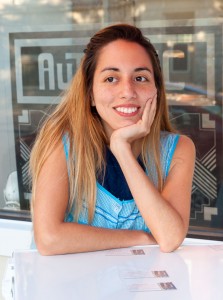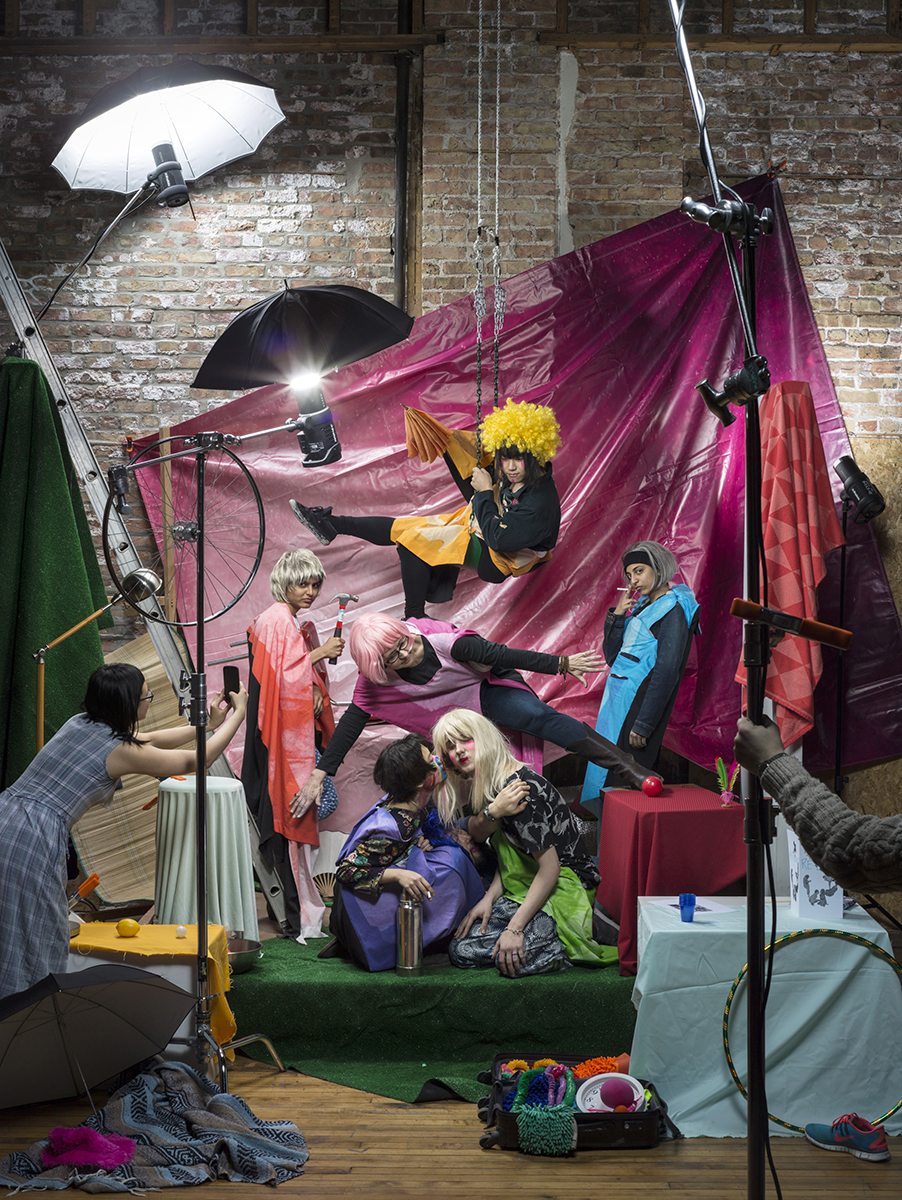This month, Paula Calvo interviewed the winners of the Dimensions of an Artist Grant, which was sponsored by the School of the Art Institute of Chicago’s Student Government. The three artists talked about their work and production for their upcoming exhibition hosted by the school’s Student Union Galleries. Paula’s chat with Melissa Leandro is reproduced below; Paula’s interviews with Sheika Lugtu and Laura Anne Gordon can be read online as well.
Photos courtesy of the artist.
Why is it important for you to expose multiple layers in your work?
My art practice is an extension of myself, specifically my memories, family histories, and mementos gathered along the way. In the same way my personality has multiple layers, so does the manifestation of my art practice. I bounce between drawing, textiles, and sculpture when developing my work. This flexibility in material choice reflects my attitudes toward cultural identity. I choose to experiment with how I identify and expose myself through the scope of culture, nationality, class, and gender. These characters are not black and white, but lie in a world of grey. As a first generation American, I’m interested in my personal duality within culture and language.
I’ve found that I often parallel the disparity of English and Spanish by intuitively overlaying contrasting materials to find unlikely combinations of process. For instance, in my weavings, I often build up multiple layers of fiber (plastic, paper, felt, yarn) and fuse them together to create a new substrate. The materials are often cheap castaways that have a relationship to domestic objects, like upholstery, tablecloths, and polyester fabric. Through the process of weaving, elements of the original materials are hidden, exposed, and thus fragmented. The goal is to be left with a piece that evokes a certain kind of “homey” aesthetic — specifically, how dissimilar components can manifest thoughts of nostalgia, family history, and tradition through use of pattern, imagery, and textures.
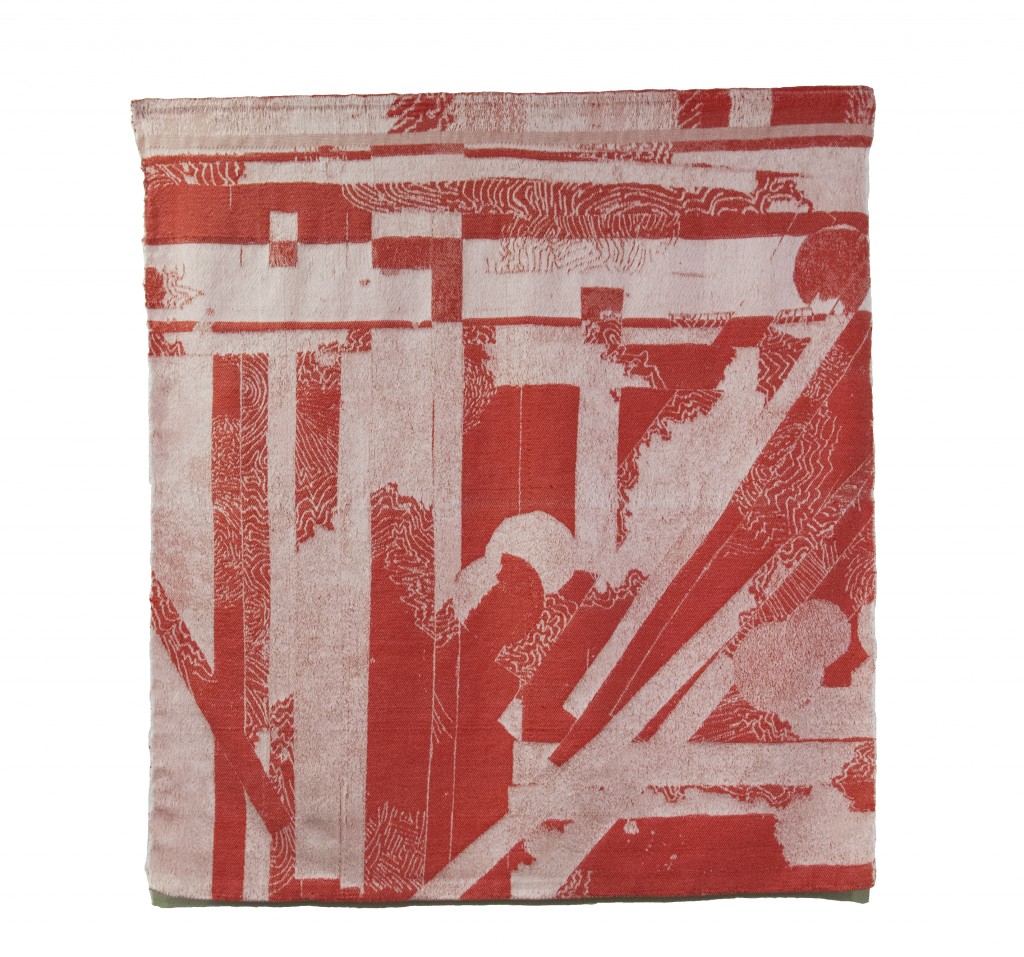
Jacquard Weaving, Natural Cotton. 41” X 45.5”
How does Spanglish and growing up in Miami translate into your choice of materials?
Spanglish, for those not familiar with the term, is the use of both English and Spanish words when having a conversation. In Miami, it’s quite common for people to speak in English but regularly use Spanish words or phrases as a form of slang. Although I don’t live in Miami anymore, I still occasionally use Spanglish, and process thoughts and memories in both languages. As time progresses, it becomes difficult to differentiate whether memories were in one language or another — things are lost in translation.
For myself, this mixing of languages has often led to the creation of new slang words. I believe this correlates to the mixing of material textures in my practice. I combine natural with synthetic, bright with muted, digital with the analog, in the same way Miami was a collision of cultures, music, food and so on. In the larger context, there was also a huge contrast between the rural landscapes of Costa Rica and the more urban, party town that is Miami, Florida. I find comfort in merging the physical qualities of a very rural landscape with the rich, hyper-extreme colors that surround my life in the US.
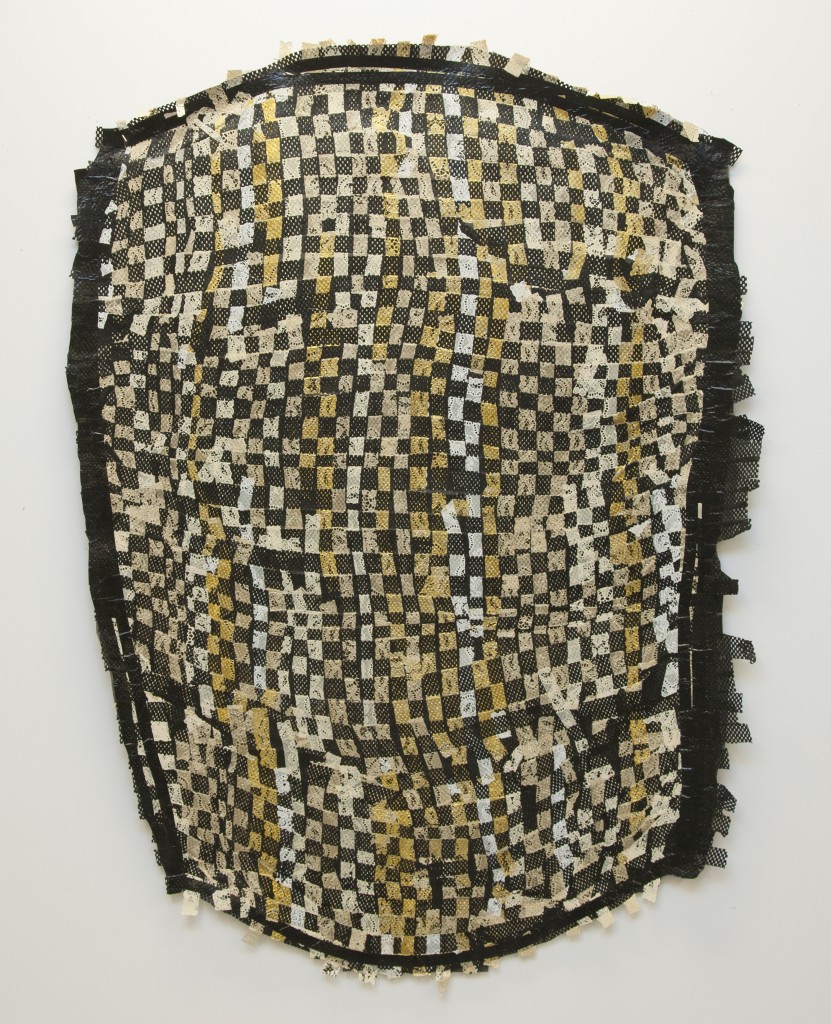
Synthetic weaving, plastic, rubber, electrical tape. Heat fused. 58” x 42”
As a bilingual Latina woman, what are your expectations for your own work and upcoming exhibition?
I’d like my work to constantly generate — or branch off — into new ideas. My process of making and thinking through ideas never completely ends. I often go back and forth with imagery and process by using recurring marks and patterns from finished or in-progress works. A project that starts off as a cyanotype on paper may be translated into a jacquard weaving, but in between the processes there are several iterations of the same base image. It’s a never-ending process that motivates me to keep making work. I’m focused on spending time in my studio, having a dialog about my practice, as well as learning about other artists.
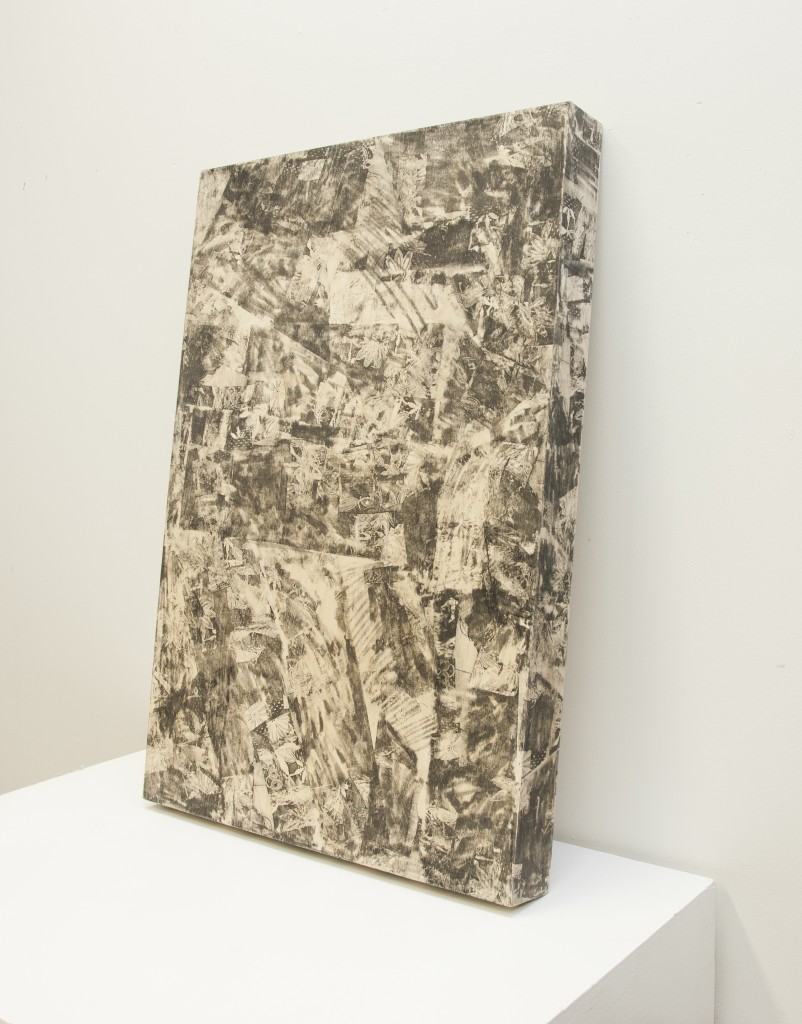
Toner Transfer on Wood. 23”x34”
How do you challenge “traditional woman’s work”?
My practice involves craft-based processes that were once, and at times still are, largely under the umbrella of domestic female roles or female pastimes: sewing, embroidery, crochet, knitting and weaving, to list a few. I believe the marginalized status of women throughout history has a huge effect on the lack of recognition from the “fine art world” when it comes to noting value in other materials. Particularly materials and processes deemed as craft. For example, I believe cloth is large part of who we are; we have an intimate connection to this material because it physically lives on our bodies and moves into our spaces. To our [craft artists’] benefit, craft has always been a social practice: It’s about communicating skills to each other, passing them down, and refining the techniques. This plays a huge part in my work as I think about traditions: what gets carried on from my own family history, and what fades away through distance and time. I see the “fine art world” as being largely dominated by male painters and sculptors, even now. We still have a long way to go before we see an equal number of female artists being represented and exhibited in galleries and museums. However, I am optimistic the change is happening now!
What artist are you a big fan of?
Too many to list, but here are a few I’ve been thinking about lately: Ann Hamilton, Christy Matson, Lilli Carré, Ebony Patterson, Rachel Uffner, Amanda Ross-Ho, and José Lerma.



